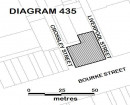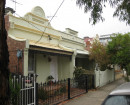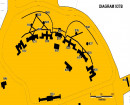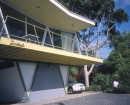Back to search results
ST KILDA PARK PRIMARY SCHOOL
70 FITZROY STREET ST KILDA, PORT PHILLIP CITY
ST KILDA PARK PRIMARY SCHOOL
70 FITZROY STREET ST KILDA, PORT PHILLIP CITY
All information on this page is maintained by Heritage Victoria.
Click below for their website and contact details.
Victorian Heritage Register
-
Add to tour
You must log in to do that.
-
Share
-
Shortlist place
You must log in to do that.
- Download report

PRIMARY SCHOOL NO.2460 SOHE 2008

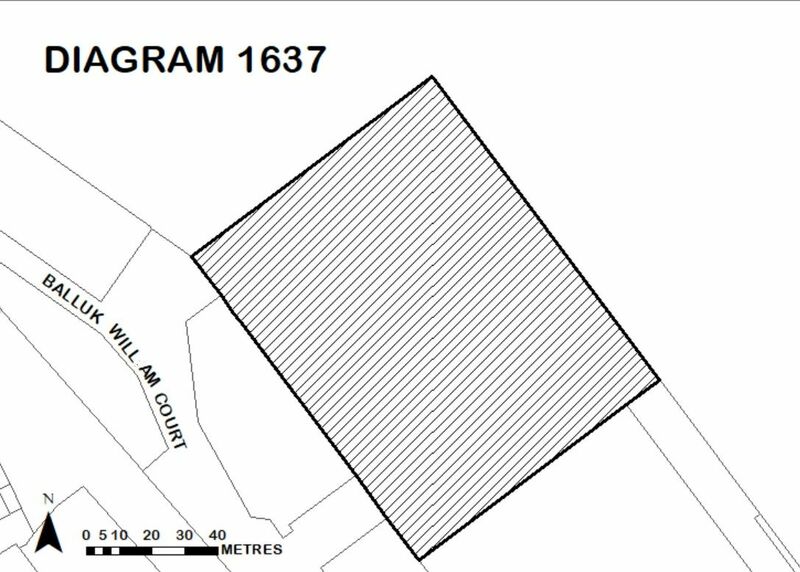
On this page:
Statement of Significance
What is significant?
St Kilda Park Primary School, including the 1882 Gothic building designed by H. R. Bastow.
How is it significant?
The St Kilda Park Primary School is of architectural significance to the State of Victoria. It satisfies the following criterion for inclusion in the Victorian Heritage Register:
Criterion D
Importance in demonstrating the principal characteristics of a class of cultural places and objects
Why is it significant?
The St Kilda Park Primary School is architecturally significant as a fine intact example of a large urban primary school designed in the Gothic style. Asymmetrically composed on a corner site, it contains an unusual two storey splayed corner element which provides a visual transition between the two facades. Steep slate gable roofs, tall chimneys and a prominent tower provide a picturesque skyline and pointed and trefoil arches with render label mouldings give a Gothic character. The building has polychromatic contrasts in black, cream and red brick, set on a bluestone base. [Criterion D]
Show more
Show less
-
-
ST KILDA PARK PRIMARY SCHOOL - History
St Kilda Park Primary School (also known as Primary School No. 2460) was constructed in 1882 to a design by architect Henry R. Bastow of the Education Department. Land for a school in this vicinity was applied for as early as 1874, when predictions were made that population increases would necessitate the provision of more school accommodation than was already available. Concerns were raised again in 1876 that the local schools, one in Acland Street and another in Punt Road, South Melbourne, were overcrowded, and the Department had suggested that a larger school was needed at north St Kilda. A school with accommodation for 600 children was requested that year. After some debate about the most suitable site, land was annexed from Albert Park in 1878, adjacent to the St Kilda Railway Station, for the purpose of erecting a new school building. The school, however, was not completed for another four years. When St Kilda Park Primary School was finally opened, the two existing schools were closed and the furniture removed to the new building.
The two-storey school building is designed in the Gothic style, which was commonly adopted for larger school buildings from the late 1870s. It is a brown brick building with polychromatic contrasts in black, cream and red brick, set on a bluestone base. Asymmetrically composed on a corner site, it contains an unusual two storey splayed corner element which provides a visual transition between the two facades. Steep slate gable roofs, tall chimneys and a prominent tower provide a picturesque skyline, and pointed and trefoil arches with render label mouldings give a Gothic character.
Additions and alterations were made to the school in 1923 in a style sympathetic to the original building. In the 1950s a prefabricated aluminium Bristol classroom was added to the site. This was removed in 2011.
The school is of historical interest due to its association with such prominent past pupils as Sir Zelman Cowen, cricketers Ian Johnson, Bill Ponsford and Keith Miller, and artist Sir William Dargie.
References:- Blake L J (ed) (1973) Vision and Realisation: A Centenary History of State Education in Victoria, The Government Printer, Melbourne.
- Burchell L (1980) Victorian schools: a study in colonial government architecture, 1837-1900, Melbourne University Press, Melbourne.
- Peterson R (1993) Historic Government Schools: a Comparative Study June 1993, Department of Planning and Development, Melbourne.
ST KILDA PARK PRIMARY SCHOOL - Permit Exemptions
General Exemptions:General exemptions apply to all places and objects included in the Victorian Heritage Register (VHR). General exemptions have been designed to allow everyday activities, maintenance and changes to your property, which don’t harm its cultural heritage significance, to proceed without the need to obtain approvals under the Heritage Act 2017.Places of worship: In some circumstances, you can alter a place of worship to accommodate religious practices without a permit, but you must notify the Executive Director of Heritage Victoria before you start the works or activities at least 20 business days before the works or activities are to commence.Subdivision/consolidation: Permit exemptions exist for some subdivisions and consolidations. If the subdivision or consolidation is in accordance with a planning permit granted under Part 4 of the Planning and Environment Act 1987 and the application for the planning permit was referred to the Executive Director of Heritage Victoria as a determining referral authority, a permit is not required.Specific exemptions may also apply to your registered place or object. If applicable, these are listed below. Specific exemptions are tailored to the conservation and management needs of an individual registered place or object and set out works and activities that are exempt from the requirements of a permit. Specific exemptions prevail if they conflict with general exemptions. Find out more about heritage permit exemptions here.Specific Exemptions:General Conditions: 1. All exempted alterations are to be planned and carried out in a manner which prevents damage to the fabric of the registered place or object.General Conditions: 2. Should it become apparent during further inspection or the carrying out of works that original or previously hidden or inaccessible details of the place or object are revealed which relate to the significance of the place or object, then the exemption covering such works shall cease and Heritage Victoria shall be notified as soon as possible. Note: All archaeological places have the potential to contain significant sub-surface artefacts and other remains. In most cases it will be necessary to obtain approval from the Executive Director, Heritage Victoria before the undertaking any works that have a significant sub-surface component.General Conditions: 3. If there is a conservation policy and plan all works shall be in accordance with it. Note:A Conservation Management Plan or a Heritage Action Plan provides guidance for the management of the heritage values associated with the site. It may not be necessary to obtain a heritage permit for certain works specified in the management plan.General Conditions: 4. Nothing in this determination prevents the Executive Director from amending or rescinding all or any of the permit exemptions.General Conditions: 5. Nothing in this determination exempts owners or their agents from the responsibility to seek relevant planning or building permits from the responsible authorities where applicable.Freestanding buildings constructed or moved to the site post 1990 (this exemption does not apply to buildings which link with or abut the 1882 Gothic building)- All internal works.
- Removal or demolition.
Buildings which link with or abut the 1882 Gothic building- Internal works, provided that there is no change to the external building envelope and that no works intersect with the 1882 school building.
Landscape/ outdoor areas- Installation and replacement of shade sail fabric and supporting structure.
- Replacement of playground equipment and outdoor furniture in the same location.
- Pruning of all trees to ensure safety.
- Removal, replacement and installation of new ground surfacing treatments (for example, asphalt, safety matting) provided it is not within five metres of significant buildings.
ST KILDA PARK PRIMARY SCHOOL - Permit Exemption Policy
It is recommended that a Conservation Management Plan is utilised to manage the place in a manner which respects its cultural heritage significance.
-
-
-
-






